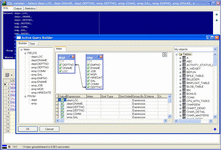

- #ORACLE SQL DEVELOPER TRAINING HOW TO#
- #ORACLE SQL DEVELOPER TRAINING MOD#
- #ORACLE SQL DEVELOPER TRAINING UPDATE#
- #ORACLE SQL DEVELOPER TRAINING SOFTWARE#
- #ORACLE SQL DEVELOPER TRAINING FREE#
#ORACLE SQL DEVELOPER TRAINING UPDATE#
#ORACLE SQL DEVELOPER TRAINING HOW TO#
How to enable and disable a Constraint?.Differentiate system privileges from object privileges.Decipher how constraints can be created at table creation.List the data types available for columns.Use of DDL Statements to Create and Manage Tables Save and discard changes with the COMMIT and ROLLBACK statements.Delete rows from a table with the DELETE statement.Change rows in a table by the UPDATE statement.Use a SET operator to combine multiple queries into a single query.Write single-row and multiple-row sub-queries.Describe the types of problem that sub-queries can solve.View data that generally does not meet a join condition by using outer joins.Write SELECT statements to access data from more than one table.Exclude groups of date by using the HAVING clauseĭisplay Data From Multiple Tables Using Joins.Divide the data in groups by using the GROUP BY clause.Use the aggregation functions in SELECT statements to produce meaningful reports.Use conditional IF THEN ELSE logic in a SELECT statement.Apply the NVL, NULLIF, and COALESCE functions to data.Use the TO_CHAR, TO_NUMBER, and TO_DATE conversion functions.Describe implicit and explicit data type conversion.Invoke Conversion Functions and Conditional Expressions Manipulate dates with the DATE functions.

#ORACLE SQL DEVELOPER TRAINING MOD#

#ORACLE SQL DEVELOPER TRAINING SOFTWARE#
Software must be installed and fully operational before the course begins.Microsoft Edge and Safari are also compatible. Browser: The latest version of Google Chrome or Mozilla Firefox are preferred.Oracle SQL Developer - The client interface for connecting to Oracle.
#ORACLE SQL DEVELOPER TRAINING FREE#
Oracle Database Express Edition (XE) 12c or 18c - Free edition of Oracle RDBMS.By course completion, you will understand and know how to use PL/SQL's main features, including declaring, naming, and assigning variables. PL/SQL is a procedural language with variables, conditions, loops, subprograms, stored procedures, and functions. While Oracle uses a standard SQL like other major databases, PL/SQL is specific to Oracle. This self-paced SQL training course is perfect for advancing your current SQL skills.


 0 kommentar(er)
0 kommentar(er)
